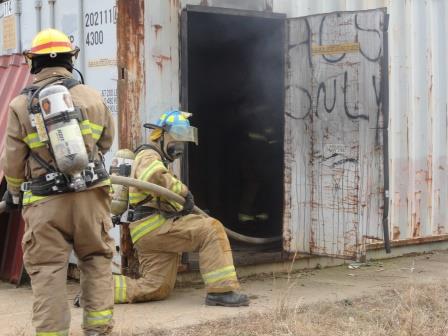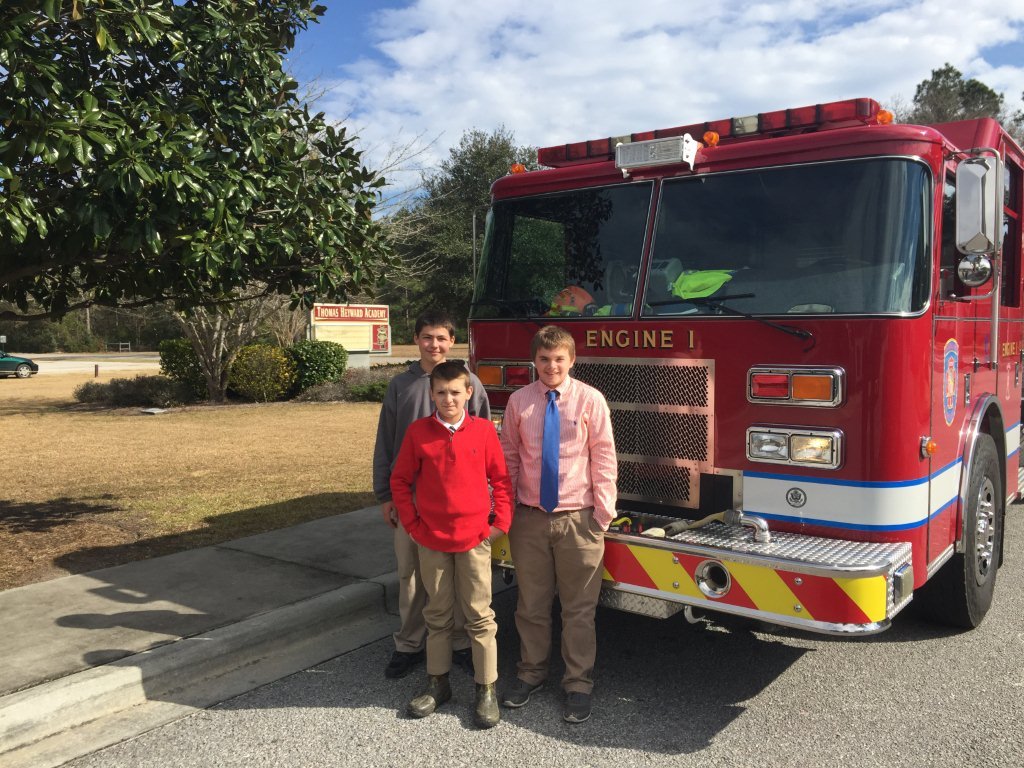Volunteer firefighters historically have been the backbone of fire departments, particularly in smaller towns and rural areas. Of the 17,500 members of the South Carolina State Firefighters’ Association, 11,500 are volunteer firefighters.

Laurens County is one of only 11 counties in South Carolina without a career technology center. City of Clinton officials forged a partnership with Clinton High School to develop a firefighting curriculum to benefit both the students and the fire department. The Boy Scout Explorer Program, as well as the State Fire Academy, have also supported the project. The city's fire commander and training officer are the instructors. Students earn a Firefighter I certification upon completion.
But changes in the economy and demographics coupled with extensive training regulations have caused the ranks of volunteer firefighters nationally to drop substantially, amounting to a 13 percent decrease since 1984. Plus, volunteer firefighters are aging. The number of volunteers aged 50 and older increased nearly 100 percent between 1987 and 2012.
The declining numbers are having a significant impact on fire departments. About 85 percent of fire departments across the country are staffed entirely or mostly by volunteers. Ninety-five percent of all volunteer firefighters are providing fire protection to communities of 25,000 or less people.
There are plenty of reasons fewer people are interested in becoming volunteer firefighters and emergency responders, according to Bryan Riebe, recruitment and retention grant coordinator with the S.C. State Firefighters’ Association.
The economy and family dynamics have changed, with many workers now facing a longer commute to their full-time jobs, meaning it is tougher to leave their jobs and quickly respond to fire calls.
"With jobs taking people away from home, there’s a loss of the sense of community," Riebe said. "Studies have shown a connection between religious affiliation and public service. With local fire departments and churches no longer the hub of activity in an area, volunteers do not exist,"
The training requirements have also become more stringent. For example, volunteers must receive the same training as career firefighters to get Firefighter II certification. To be certified, a volunteer must commit to more than 250 hours of training, he said.
Riebe listed other factors involved in the drop of volunteers including the increased call volume and the growing type of calls departments must respond to, including hazardous material incidents, confined space and high-angle rescues, chemical and biological events, and active shooter situations.
It all adds up to a more difficult job attracting volunteers. That’s especially troubling when looking at cost issues and department budgets. Reibe explained that volunteer fire departments and volunteer firefighters around the country are estimated to save taxpayers $139.8 billion annually. The communities realizing those savings are often not in a financial position to fully or partially fund a fire department.
A 2009 study indicated that the number of volunteer firefighters in South Carolina needed to double—bringing the number to 23,000—to fully comply with national standards, he said.
So what should a small fire department that relies on volunteers do to meet the community’s need?
"Previous research shows that retaining volunteers is managed best by providing adequate, knowledgeable leadership, creating alternative methods of meeting the training needs, engaging family members in the process, and offering a simple ‘thank you’ to those serving," Riebe said.
Some departments are trying to regain the feeling of community that was integral to the volunteer firefighting experience in the past. Some are sprucing up their stations with game rooms, large screen televisions, work-out gyms and sleeping quarters for the volunteer firefighters.
"Departments are trying to attract volunteers, trying to get them to want to come to the station, hang out and be ready," said Todd Williams, public safety loss control consultant with the Municipal Association of South Carolina.
Another effective strategy is introducing high school students to the firefighting profession. The State Firefighters’ Association has relied on several Department of Homeland Security Staffing for Adequate Fire and Emergency Response grants to implement a curriculum taught in comprehensive high schools and career and technology centers across the state.
The classes started in 2014-2015 with 12 programs. Currently, there are 24 South Carolina schools teaching the curriculum to 255 students. Students who successfully complete the written and practical portions of the program are fully certified as a Firefighter II and can volunteer or be employed at departments around the state and nation, he said.
The Firefighters’ Association has also used grant dollars to design an online course for volunteer fire department leadership; to bring leadership experts from around the nation to conduct training and to provide grants to the schools teaching the fire program.
Getting young people interested is key to growing the ranks of volunteers and career firefighters. Many departments have Explorer and Junior Firefighter programs that allow departments to recruit 16- and 17-year-olds for programs and training.
Ridgeland Fire Chief John Mingledorff’s department has a mixture of paid and volunteer firefighters along with a handful of cadet firefighters. He started the cadet program in 2008, assigning high school students to shifts at the fire department. The students learn about the firefighting profession in addition to learning about character, professionalism, respect and community involvement.

Members of Ridgeland Fire Department's cadet program
Ridgeland’s cadet program requires the students to keep up their grades and show the same type of respect at home, school and in the community that they show at the fire station. Cadets can begin the program at the station at age 14. At 16, students can start going to classes and can earn firefighter certification at age 18.
"It’s blossomed into an excellent program," Mingledorff explained. "Four or five of those cadets are career firefighters now. This program is about them taking things seriously, having good character and being respectful. They are not able to work calls, but they see some of what we see. It gives them a different perspective of what you should and shouldn’t do and what the consequences are."
"The majority of our paid firefighters came through the volunteer system," Mingledorff said. "The volunteers are the future of our fire departments."
